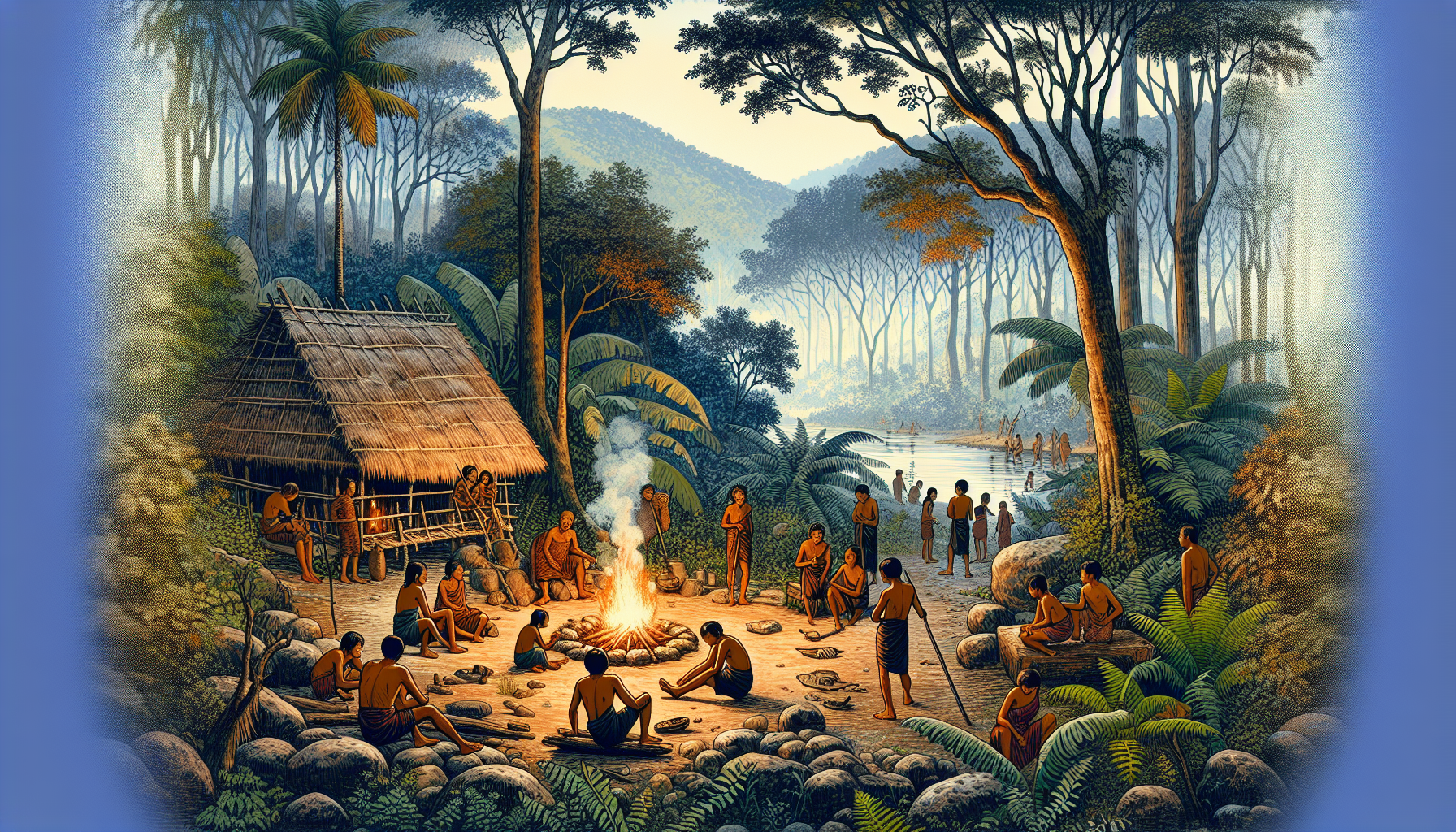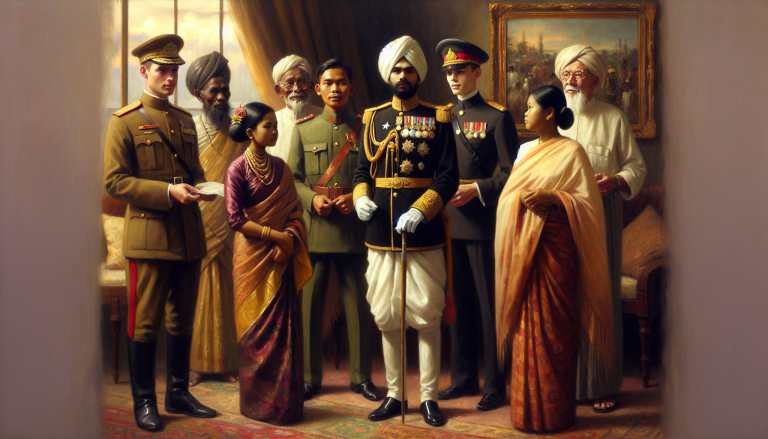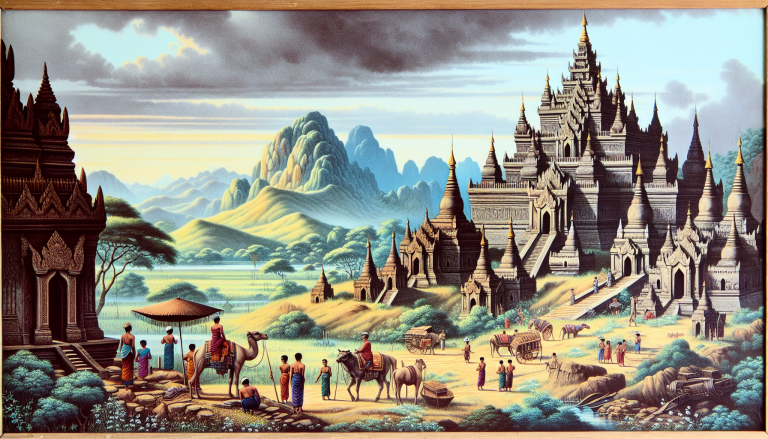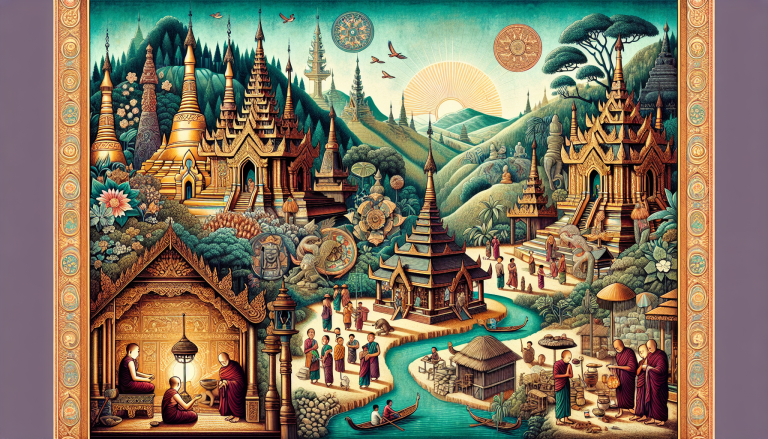Unlocking Secrets: Delving into Prehistoric Myanmar Societies
Explore prehistoric Myanmar societies, their tools, trade, and the rise and fall of the Pyu civilization. Fascinating history awaits!

The Early Societies of Myanmar
Prehistoric Settlement Patterns
Exploring the early societies of Myanmar, you’ll discover a fascinating journey of human development and settlement. During the Pleistocene era, ancient humans began to settle in the Irrawaddy River valley of northern Myanmar, utilizing the natural resources available in this lush region. Settlements in Myanmar transitioned through various phases, starting with semisedentary periods where people built stone dwellings, hunted for food, and moved when resources became scarce (Science).
These early periods provide invaluable insights into the interconnectedness of East and South Asian socio-cultural developments and the rest of Southeast Asia. According to Antiquity, comprehensive studies have been conducted across various archaeological sites, such as Halin, using Bayesian statistical approaches to interpret radiocarbon dates, which offer a reliable chronology for the region.
Tool Usage and Technological Development
Delving into the tools and technological developments of prehistoric Myanmar societies, one notable tool complex is the Anyathian, found in the Pleistocene terrace deposits of the Irrawaddy River valley. This complex comprises pebble tools, including choppers and chopping tools (Britannica). During the Late Anyathian phase, these tools evolved into smaller and more well-crafted core and flake artifacts, demonstrating a significant advancement in technological proficiency.
Despite the sophistication of the Anyathian tools, no hand axes or flakes produced using the prepared striking-platform–tortoise-core technique have been uncovered in the region. This absence suggests a unique evolutionary path in tool development in Myanmar compared to other prehistoric societies around the world.
| Tool Type | Stone Age Complex | Characteristics |
|---|---|---|
| Pebble Tools | Anyathian | Includes choppers and chopping tools |
| Core and Flake Artifacts | Late Anyathian | Smaller, well-crafted |
These early tool developments mark significant milestones in the technological progress of prehistoric Myanmar societies. Understanding these artifacts allows you to appreciate the innovative spirit of early human inhabitants of this region.
For more on the broader context of Myanmar’s history, explore our pages on myanmar history facts and myanmar historical events. You might also be interested in myanmar ancient culture and myanmar archaeological discoveries.
By diving into the rich tapestry of prehistoric Myanmar, you gain a deeper appreciation for the ancient cultures that once thrived in this fascinating part of the world. Whether you’re a seasoned traveler or just beginning your journey into historical exploration, Myanmar’s early societies offer a compelling glimpse into our shared human past.
Exchange Networks in Ancient Myanmar
Glass Trade Networks
Exploring prehistoric Myanmar societies unveils fascinating insights into the ancient civilizations of the region. Among these, the glass trade networks are particularly noteworthy. Glass beads, along with other glass artifacts, have been unearthed in various archaeological sites, suggesting an extensive network of trade and cultural exchange.
Ancient Myanmar was part of a broader trading system that connected South and Southeast Asia. Glass items found in these regions indicate a complex trade network that facilitated the movement of goods, ideas, and technologies. The presence of glass beads has been traced back to different manufacturing centers, highlighting the importance of Myanmar as a hub within these networks.
To give you a clearer picture, here is a table summarizing the distribution and types of glass found in ancient Myanmar:
| Site | Type of Glass | Origin |
|---|---|---|
| Beikthano | Glass beads | South Asia |
| Halin | Glass bracelets | Southeast Asia |
| Sri Ksetra | Glass earrings | Local production and imports |
These findings highlight the regional influence and interconnectedness of prehistoric Myanmar societies.
Evidence of Foreign Influence
The exchange networks in ancient Myanmar weren’t limited to glass trade. There is compelling evidence that illustrates the profound impact of foreign cultures on the development of prehistoric Myanmar societies. From tools and pottery to architectural styles and burial practices, numerous elements point to a rich tapestry of cultural interaction.
One significant source of foreign influence was India. The diffusion of Indian cultural elements, including the introduction of Buddhism, which played a central role in shaping Myanmar’s history (theravada buddhism in myanmar), is well-documented through archaeological discoveries and historical texts. You can see the early adoption of Indian religious and architectural elements in ancient Myanmar’s ruins and artifacts.
Another area reflecting foreign influence is the adaptation of inscriptions and scripts that point to a blend of local and external linguistic traditions. This blend is evident in various ancient scripts found in Myanmar, linking back to broader Southeast Asian linguistic trends.
Here is a glance at some key artifacts showcasing foreign influence in ancient Myanmar:
| Artifact | Origin | Evidence of Influence |
|---|---|---|
| Stone inscriptions | India | Indian scripts and languages |
| Pottery | China and India | Techniques and designs |
| Religious artifacts | India | Buddhist iconography and deities |
By delving into these networks and influences, you can gain a deeper appreciation for the historical and cultural milieu of prehistoric Myanmar. Whether you’re exploring the historical sites in Myanmar or reading up on myanmar history books, understanding these exchange networks is crucial to unlocking the secrets of ancient Myanmar societies.
Rise of the Pyu Civilization
As you venture into the history of prehistoric Myanmar societies, the rise of the Pyu civilization is a fascinating chapter. Their influence still resonates in various aspects of Myanmar’s cultural and historical landscape.
Pyu City-States and Urban Development
The Pyu civilization, known for its city-states such as Sri Ksetra and Beikthano, marked a significant transition from late prehistory to proto-urban and fully urban development by the mid-first millennium CE (Cambridge University Press). These cities are noteworthy for their early advancements in water control, iron production, ceramics, and brick architecture.
| Pyu City-State | Period of Urban Development | Notable Features |
|---|---|---|
| Sri Ksetra | Mid-First Millennium CE | Water Control, Brick Architecture |
| Beikthano | Mid-First Millennium CE | Iron Production, Ceramics |
Discover more about early civilizations in Southeast Asia
The urbanization at Beikthano is particularly significant, as it predates Indianisation and showcases the ingenuity of the Pyu in early city development. Excavations at these sites have revealed significant finds, including iron artefacts and evidence of funerary practices, which highlight their sophisticated societal structures.
| Site | Artefacts Found |
|---|---|
| Sri Ksetra | Iron Tools, Brick Structures |
| Beikthano | Ceramics, Funerary Items |
Learn more about important historical sites in Myanmar
Influence of Buddhism
The Pyu civilization was instrumental in the spread of Buddhism in mainland Southeast Asia. This belief system, which took root in the Pyu city-states, played a crucial role in their cultural and social development (Ancient Origins). Buddhism influenced everything from literacy to architectural styles, with the Pyu adopting it on various societal levels.
| Region | Spread of Buddhism |
|---|---|
| Pyu City-States | Early Adoption |
| Larger Southeast Asia | Influence through Pyu |
Explore the impact of Theravada Buddhism in Myanmar
The Buddhist influence is evident in the numerous stupas and inscriptions found at Pyu sites. These inscriptions provide insights into the religious practices and the spread of Buddhist literature. Moreover, the extent of Pyu influence on neighboring regions such as the Chin State and the Tanintharyi Region underscores their role in shaping religious landscapes beyond their borders.
| Artifact | Description |
|---|---|
| Stupas | Buddhist Religious Structures |
| Inscriptions | Buddhist Texts and Hymns |
For those who want to delve deeper into the rich tapestry of the Pyu civilization, look into ancient Myanmar civilizations and historical documents to explore more about how Buddhism permeated the daily lives and governance of these early societies. Engaging with history enthusiasts, both locally and globally, provides a window into the legacy of the Pyu and their enduring influence on Myanmar’s historical narrative.
Decline of the Pyu Civilization
External Pressures and End of an Era
The ancient Pyu civilization thrived for over a millennium, spanning from the 3rd century BC to the 10th century AD. The Pyu city-states, settled primarily along the middle reaches of the Irrawaddy River, included significant sites like Halin, Beikthano, and Sri Ksetra (Ancient Origins). Despite their long-standing presence, the Pyu civilization faced several external threats that eventually led to its decline.
Raids and Invasions
In the 9th century AD, Pyu territory encountered invasions from southern China, which significantly weakened the stability of the Pyu city-states. These raids targeted the walled cities and disrupted the social and economic structures of the Pyu. The impact of these invasions played a crucial role in hastening the decline of the Pyu civilization.
Absorption by the Kingdom of Pagan
Although the invasions dealt a heavy blow, some theories suggest that the gradual absorption of Pyu territories by the emerging Kingdom of Pagan also contributed to their decline. The Kingdom of Pagan, which rose to prominence in the 9th and 10th centuries, eventually encompassed the Pyu city-states. This assimilation marked the end of an era for the Pyu but also paved the way for the development of new cultural and political landscapes in Myanmar.
During your exploration of Myanmar’s historical sites, you will find remnants of the Pyu civilization that offer glimpses into their once-flourishing society. To gain a more comprehensive understanding of the ancient Pyu and their contributions to Myanmar’s rich history, consider reading Myanmar history books and visiting archaeological discoveries (myanmar archaeological discoveries) that further illuminate their legacy.
| Event | Impact |
|---|---|
| 9th Century AD Invasions | Weakened city-states, disrupted social and economic structures |
| Assimilation by Pagan Kingdom | Marked the end of Pyu civilization, transition to new cultural and political dynamics |
The decline of the Pyu civilization is a significant chapter in the broader narrative of Myanmar’s ancient civilizations. The interplay between external pressures and internal transitions showcases the dynamic nature of Myanmar’s historical evolution. As you delve deeper into the history and culture of Myanmar, these insights will enrich your appreciation of its ancient past and enduring legacy.






